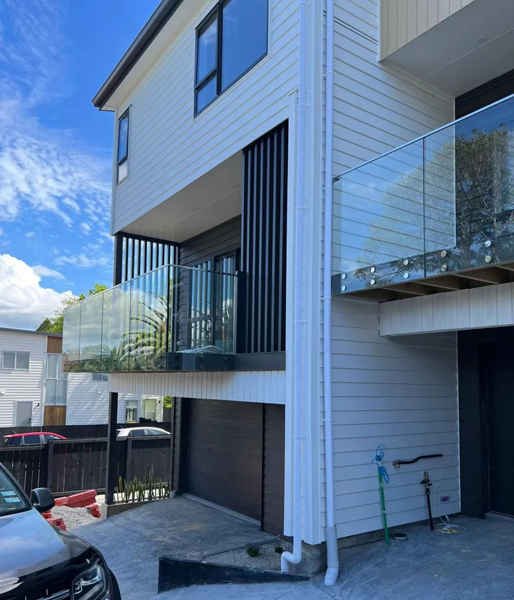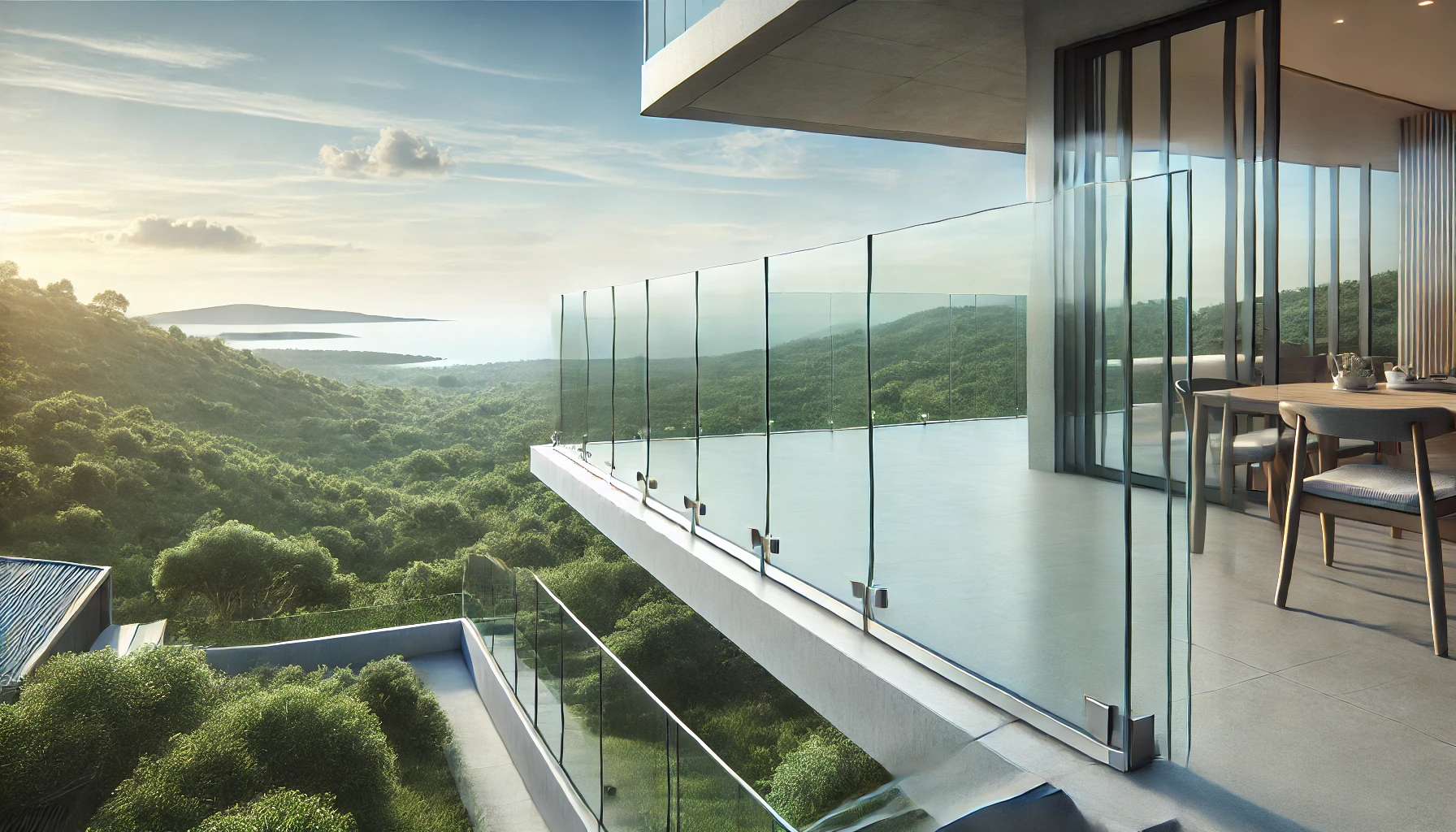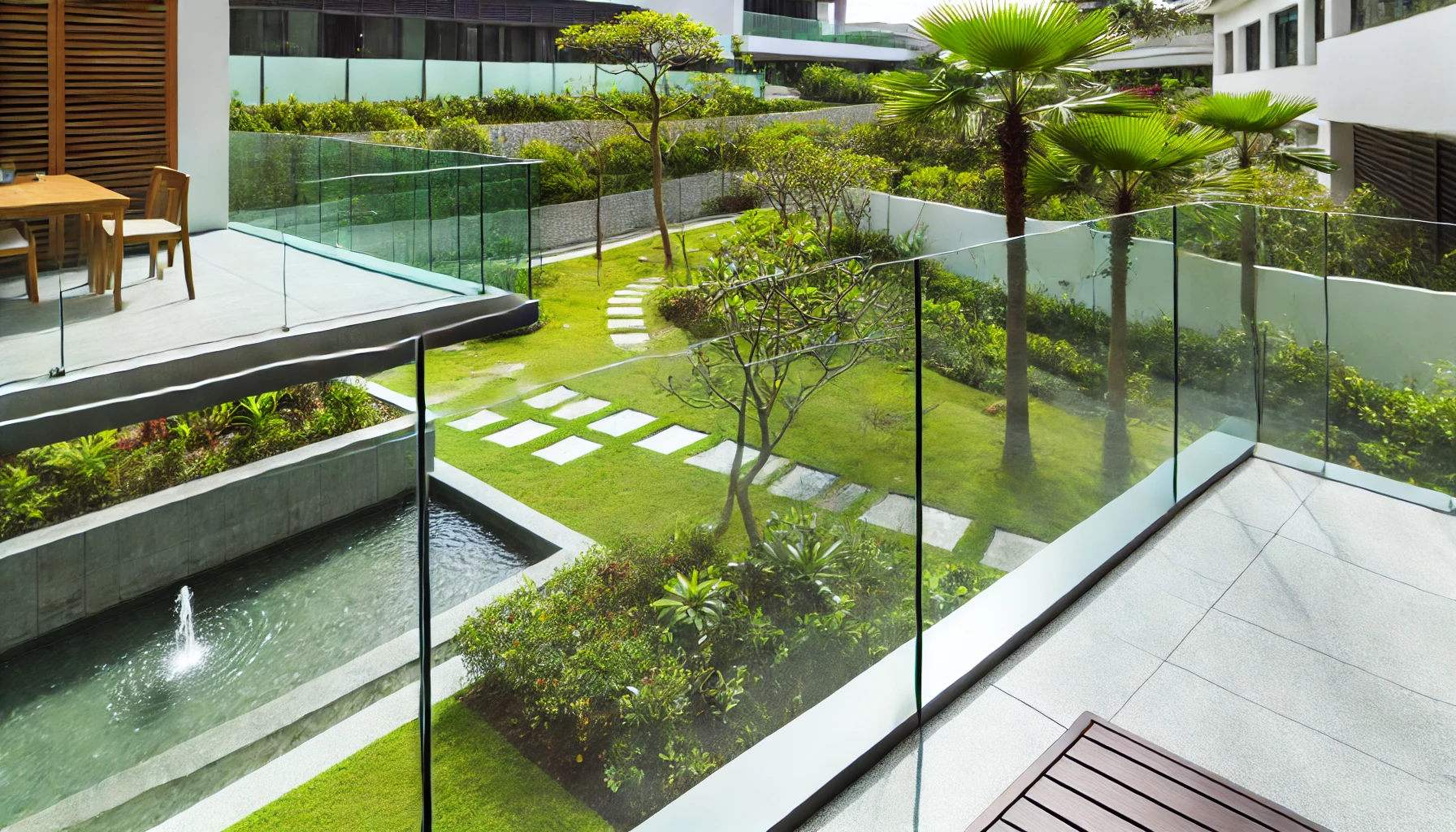Introduction
Glass railings have become increasingly popular in both residential and commercial projects due to their modern look and ability to provide unobstructed views. However, executing a glass railing project successfully requires careful planning and attention to detail at every stage—from initial design to final installation. This comprehensive guide will walk you through the entire process, helping you understand the key steps involved in creating a beautiful and safe glass railing system.
1. Design Phase
The design phase is the foundation of your glass railing project. During this stage, you’ll make critical decisions about the look, functionality, and structural integrity of the railing system.
a) Identifying the Purpose and Location
- Determine the Purpose: Identify whether the glass railing is for aesthetic enhancement, safety, or both. This will influence your design choices, such as the type of glass and framing materials used.
- Location Considerations: The location of the railing—whether indoors or outdoors, on a balcony, staircase, or terrace—will affect the design. Outdoor installations, for example, may require more durable materials to withstand weather conditions.
b) Choosing the Design Style
- Modern Minimalist: Opt for frameless glass panels to create a sleek and unobstructed view, ideal for modern homes or offices.
- Traditional: Consider adding decorative metal or wood frames to the glass panels for a classic look, suitable for traditional interiors.
- Rustic: Combine glass with natural materials like timber for a warm and inviting appearance, perfect for country homes or cabins.
c) Selecting the Right Materials
- Glass Type: Choose between tempered glass for its strength and safety features or laminated glass for added security and noise reduction.
- Framing Materials: Decide on the type of metal or wood for the frames. Stainless steel is popular for its durability and resistance to corrosion, while wood adds warmth and character.
d) Compliance with Building Codes
- Research Local Regulations: Ensure that your design complies with local building codes and safety regulations. This may include minimum height requirements, load-bearing capacities, and spacing between panels.
- Consult with Professionals: If unsure, consult with an architect or engineer to verify that your design meets all legal requirements.
2. Planning and Budgeting
Once the design is finalized, the next step is planning and budgeting. This stage involves detailed planning of the logistics, timeline, and costs associated with the project.
a) Creating a Detailed Plan
- Timeline: Establish a realistic timeline for each phase of the project, from material procurement to installation. Consider potential delays due to weather, supply chain issues, or other factors.
- Logistics: Plan for the delivery of materials, ensuring that they arrive on-site when needed. Also, arrange for storage if necessary to protect the materials until installation.
b) Setting a Budget
- Material Costs: Estimate the cost of glass, framing materials, hardware, and other components. Get quotes from multiple suppliers to find the best price without compromising on quality.
- Labor Costs: Factor in the cost of hiring professionals for installation, including any specialized services like glass cutting or custom fabrication.
- Contingency Fund: Set aside a contingency fund to cover unexpected expenses, such as material overruns or last-minute changes to the design.
c) Choosing a Reliable Supplier
- Reputation and Experience: Select a supplier with a strong track record of delivering high-quality glass railing systems. Look for reviews, testimonials, and examples of their previous work.
- Customization Options: Ensure that the supplier can accommodate any custom design requests you have, whether it’s for specific glass types, finishes, or framing materials.
3. Fabrication and Production
With the design finalized and materials sourced, the next step is fabrication and production. This involves cutting, shaping, and assembling the glass and framing components according to your design specifications.
a) Glass Fabrication
- Precision Cutting: The glass panels should be cut to exact dimensions based on your design. This requires precise measurements and advanced cutting techniques to ensure a perfect fit.
- Edge Finishing: The edges of the glass should be polished to remove any sharpness, ensuring safety and enhancing the overall appearance.
b) Frame Fabrication
- Metalwork: If your design includes metal frames, these should be fabricated with precision to match the glass panels. Stainless steel, aluminum, or wrought iron may be used depending on the design.
- Woodwork: For wooden frames, the timber should be carefully cut, sanded, and finished to complement the glass panels. Consider protective coatings to enhance durability, especially for outdoor installations.
c) Quality Control
- Inspection: Before the components leave the factory, they should undergo rigorous quality checks to ensure they meet the design specifications and safety standards.
- Test Fitting: In some cases, a test fitting may be conducted to ensure that all parts align perfectly before final assembly on-site.
4. Installation
The installation phase is where your design comes to life. Proper installation is crucial for the safety, durability, and aesthetic appeal of the glass railing system.
a) Preparing the Site
- Site Inspection: Before installation begins, inspect the site to ensure it is ready. This includes checking that the surface is level, free of debris, and capable of supporting the weight of the glass railing.
- Marking and Measuring: Mark out the exact positions where the glass panels and frames will be installed. Double-check measurements to ensure accuracy.
b) Installing the Frames and Hardware
- Frame Installation: Begin by installing the metal or wooden frames according to the design plan. Ensure that they are securely fastened to the base structure.
- Mounting Hardware: Install the necessary hardware, such as brackets, bolts, and anchors, making sure they are properly aligned and tightened.
c) Installing the Glass Panels
- Handling with Care: Carefully lift and position the glass panels into the frames. Use suction cups or other tools designed for glass handling to avoid damage.
- Securing the Panels: Once in place, the glass panels should be securely fastened using clamps or other mounting systems. Ensure that the panels are level and aligned with each other.
d) Final Inspection
- Safety Check: Conduct a thorough inspection to ensure that all components are securely installed and that there are no loose parts or gaps.
- Visual Check: Verify that the installation meets the design expectations, with all glass panels and frames properly aligned and finished.
5. Post-Installation Maintenance
After installation, regular maintenance is essential to keep the glass railing system looking great and functioning safely.
a) Cleaning
- Glass Panels: Clean the glass panels regularly with a non-abrasive cleaner to prevent dirt and grime from accumulating. Use a soft cloth or sponge to avoid scratches.
- Metal and Wood Frames: Wipe down metal or wood frames to remove dust and moisture. For outdoor installations, consider applying a protective coating to prevent corrosion or weather damage.
b) Regular Inspections
- Structural Integrity: Periodically inspect the railing system for signs of wear or damage. Check for loose hardware, cracks in the glass, or any other issues that could compromise safety.
- Maintenance Repairs: Address any issues promptly, such as tightening loose screws or replacing damaged components, to maintain the integrity of the railing system.
Conclusion
A successful glass railing project requires careful planning, precise execution, and ongoing maintenance. By following the steps outlined in this guide, you can ensure that your glass railing system is not only beautiful but also safe and durable. Whether you’re working on a residential balcony or a commercial staircase, a well-designed and properly installed glass railing can enhance the aesthetics and value of any space.







